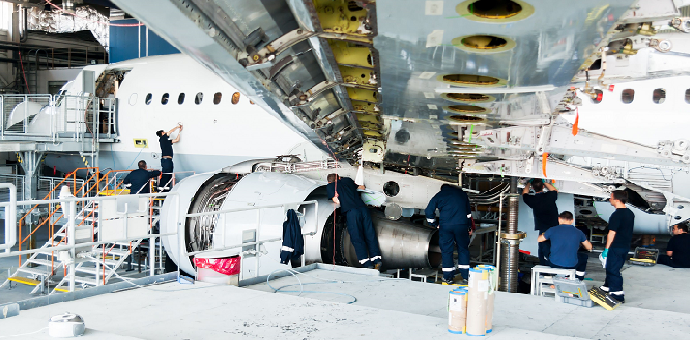By Steven Bentley – CEO of Sofema Aviation Services
Authors Comment – This is a brief synopsis of a number of problem areas and as you will see there are no quick fixes in this story – Dialogue at the highest level is of critical importance.
Introduction
The current sadness being experienced by our industry worldwide is but a hiccup on the journey of aviation and whilst aviation activity will be somewhat depressed for the next couple of years, without doubt, the underlying shortage of competent aircraft mechanics and competent certifying staff will continue to be felt throughout the industry and will undoubtedly hurt our industry financially.
According to Boeing (https://www.boeing.com/commercial/market/pilot-technician-outlook/), more than 137,000 additional maintenance personnel will be required in Europe over the next 20 years.
Note this is additional to the replenishment requirements driven by the retirement of the “baby boomers” over the next 10 – 15 years.
The majority of Aircraft Maintenance Organisations (AMO’s) are Small to Medium Enterprises (SME’s) facing both the challenge of a heavily regulated environment, as well as pressure from the airlines to reduce costs, exacerbated by the rising cost of employment. Taken all together this means that training for ab-initio and entry-level staff is not sufficiently high on the agenda of most organisations and sometimes does not appear on the agenda at all.
Shrinking Not Growing
There is no easy way to address the coming manpower shortages which we are facing. We cannot replace a 20 years’ experience maintenance staff with an apprentice and time is required to achieve an acceptable level of maturity. However, a good step 1 would be to accept this is a reality, and to look at developing Pan-European solutions to mitigate the exposure.
As things currently stand the aviation technical workforce will continue to face a shortage of skilled workers, partly because there are fewer young people prepared to invest the time to learn a skill and partly due to both the cost and time to train a fully competent technician.
Recruiting and training skilled technical personnel will continue to be one of the biggest challenges which we will face across our industry. With a shared concern should also come the need for a shared solution across the industry including changes in the regulatory requirements and oversite systems.
Operators in many cases have disconnected from this manpower problem and see it as total responsibility of the Part 145 organisation, so little or no tangible support in many cases also usually chasing the cheapest maintenance option.
The Importance of Training
Central to success must be the enabling of the required investment in both existing and future workforces. (where will this come from?)
Whilst the need to train new staff is without a doubt of paramount importance, the funding required for this often falls short of the requirements, this is a serious concern because poor or insufficient training becomes a precursor for incidents and accidents – See the following example:
A recent event saw a potentially fatal accident to an Airbus A321 AAIB Special Bulletin S1/2020 published 21 April 2020
The investigation has determined that during biocidal shock treatment to combat microbial contamination, an excessive quantity of Kathon biocide was introduced into the aircraft’s wing fuel tanks, equating to 37 times the maximum permitted dosage.
In addition, training needs to deal with new technology in a way that Part 66 is not doing, emerging technology has given us:
- Internet of Things (IOT)
- Artificial Intelligence (AI)
- 3D printing
Lack of training has the potential to leave technical staff unable to engage at the correct level.
Areas of Potential Improvement
The current Part 66 Process is extremely constrained and creates sometimes impossible to achieve objectives which are usually circumnavigated. (Thus giving birth to a culture of Rule Breaking – A recent group of students completing 737 Max training was told by the aircraft owner “you can look but not touch!”)
The reality is that you cannot ever meet the current OJT requirements in a normal Line Maintenance Environment (But we do – we make it work and everyone is happy until it is not)
Reality check – every maintenance staff will tell you it is not ok – but no one complains so as not to jeopardize the certificate – the current system is seemingly somewhat broken.
Consider the development of the role of the MRO in the training process – for example by allowing the organisation to more appropriately manage the competence of the maintenance staff including, for example, the management of practical training which can be done in a way that a Part 147 Organisation is not necessarily able to do.
Conclusion – This is a multifaceted problem and so any solution will not be out of the box.
Firstly the manpower problem is not recognized at the highest level.
Secondly, formal analysis of the magnitude of the problem is not underway
Thirdly funding required for essential training is not available
Fourthly the culture of box-ticking will lead to incidents & accidents
Sofema Aviation Services (SAS) and Sofema Online (SOL) offer more than 700 Regulatory Compliant and Vocational Training Courses focused on compliance with EASA , FAA, GCAA & OTAR
For further details please email office@sassofia.com and online@sassofia.com
Tags:
Aviation Maintenance, Manpower, EASA Trainings, European Aviation Maintenance Staff





